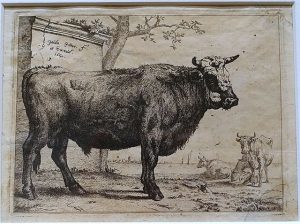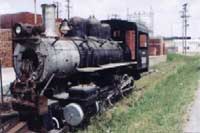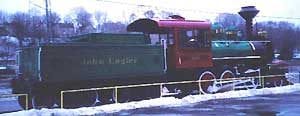By Robert Hodge
In 1852, Fredericksburg businessmen were concerned with the failure of the Rappahannock Canal (see Fredericksburg Times, Jan. 1978), the impassability of the turnpike, the incomplete state of the plank road and the loss of county trade to the Alexandria markets via the railroad.
A meeting was held and it was decided to revive an 1834 proposal for a railroad connecting Fredericksburg with Gordonsville. An 1835 survey reported, "no tract in Virginia could be so easily or so cheaply improved." The result was the incorporation of the Fredericksburg and Gordonsville Railroad Company with survey work underway in the fall of 1853. Within a year, it was decided to develop the system only as far as Orange Courthouse, but the actual construction was an on and off operation and by the time the Civil War broke out, there was only a partially graded clearing-shown on Civil War maps as the "unfinished railroad."
In June 1866, Carter M. Braxton, a construction engineer who had served as a rodman on the original survey team, was elected president of the Company and the effort to complete the road was continued.
By 1872, about fifteen miles of track had been laid, but the Company was bankrupt. A new company, the Fredericksburg, Orange and Charlottesville Railroad Company, was organized to continue the project.
Clever Mr. Snediker
In February 1874, William S. Snediker, who lived near Parker's Store in Spotsylvania, became disgusted with the tardy movements of the company. He loaded his 100 bundles of hoop poles (used to make barrel hoops) on a flat car and taught a young bull to serve as locomotive power. He explained his modus operandi as follows: the bull drew the car up the grades and was then unhitched and mounted on the platform at the rear, the car then running downgrade without help. His bullship took to it very kindly, dragging the car up the grades with great alacrity and evincing much pleasure in riding down.
Later, this same indefatigable genius attached a small stationary engine to a flat car, used two molasses hogsheads for water tanks, and used his "double-barreled train" to make three regularly scheduled trips between Parker's Store and Fredericksburg a week.
In 1876, the Company was again bankrupt and in a court case the judge declared "This road has had more ups and downs and has been the object of more gross mismanagement and deception by northern speculators than any road in Virginia." He returned the charter to its original incorporators, the Fredericksburg and Gordonsville Railroad Company. The directors immediately transferred title to the Royal Land Development Company who changed the standard gauge (4 feet 8 ½ inches between rails) to a narrow gauge (3 feet between rails) and purchased two engines, four flat cars, four box cars and two passenger cars from the Centennial Fair Grounds in Philadelphia.
Mogul and Daffy
One of the engines was called "Mogul" and was a drab workhorse. The other was called "Daffy" for it was constructed of so much brass and copper that it was as bright as a daffodil. These were later followed by a succession of other engines, but only one was specially constructed for the line by the Baldwin Locomotive Works. That engine is preserved and displayed today in Paragould, Arkansas.*
The first train to make the trip from Fredericksburg to Orange on the completed line did so under the auspices of a new owner-the Potomac, Fredericksburg and Piedmont Railroad Company whose initials, P. F. and P. were later corrupted to reflect the passenger trade-- Poor Folks and Preachers Railroad. The trip was made on February 26, 1877, and the entire population of Orange Courthouse was reported to have turned out to welcome it.
Operating on a marginal basis, it was decided in 1925 to abandon the road, but a small group of railroad buffs purchased it, changed its name to the Orange and Fredericksburg Railway, and hoped to keep it operating. It was not more than a year later when they found they couldn't make it. The road was sold to become the Virginia Central Railroad, and its track converted to standard gauge (although it would continue to be called the "Narrow Gauge" until the present day).
Constant financial problems resulted in the abandonment of the railroad in 1938, except for a mile or so of switch track in west Fredericksburg, which continues to operate under the name "Virginia Central."
The railroading endeavor of Fredericksburg began as a thought in 1834, became a reality in 1877, and became a part of the city's history in 1938.
The Fredericksburg Times** would welcome first-hand recollections of experiences on the Narrow Gauge Railroad.
Editor's Notes:
*It has since been discovered that the engine in question was built by the American Locomotive Company (ALCO). Many thanks to Trent Dowler, historic railroad sleuth, for giving us the photos of the #300, both before and after its restoration. The #300 is now on display in Michigan.
**This article originally appeared in the February 1978 issue of the Fredericksburg Times magazine and is reprinted here with the author's permission.





